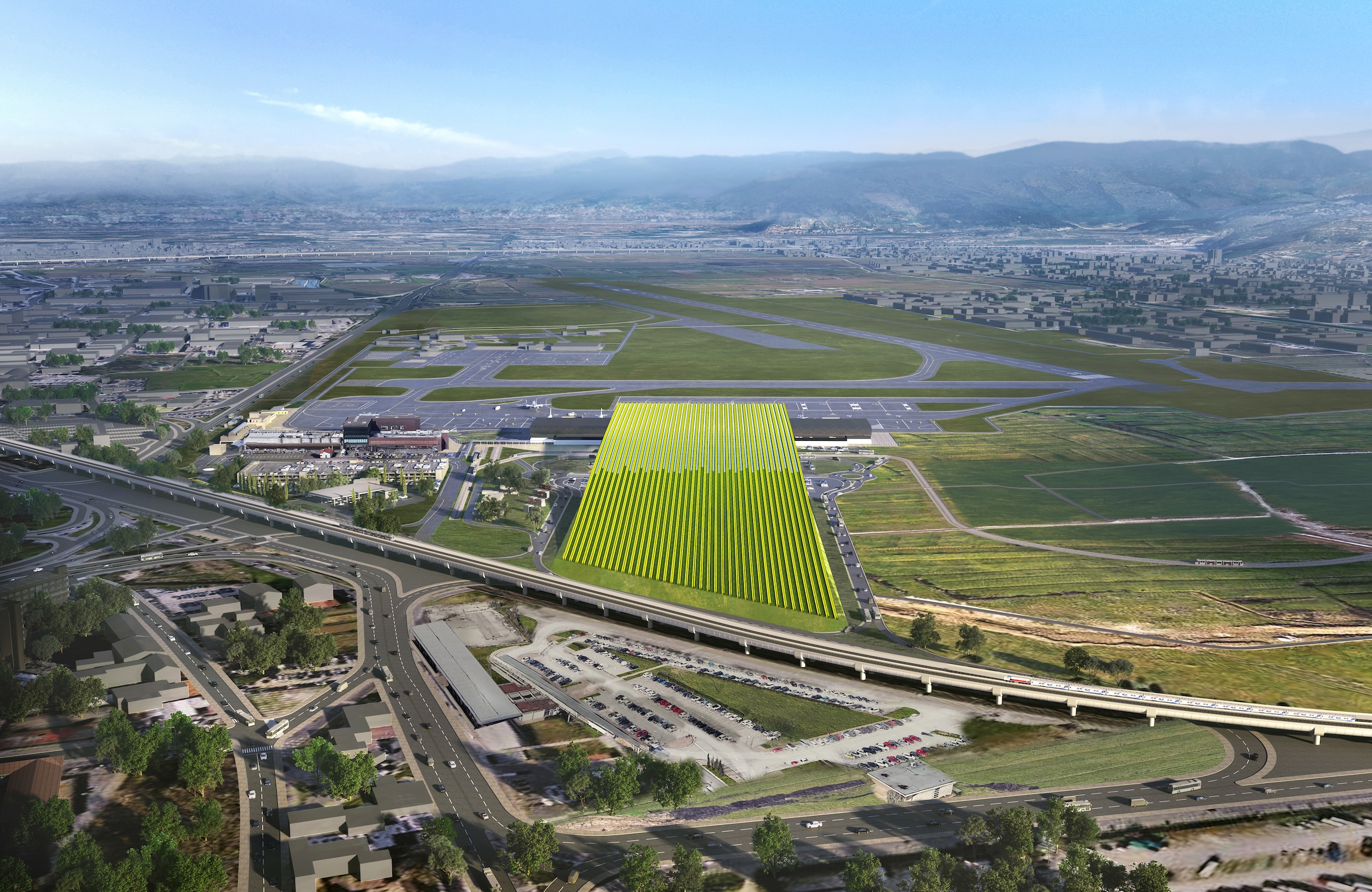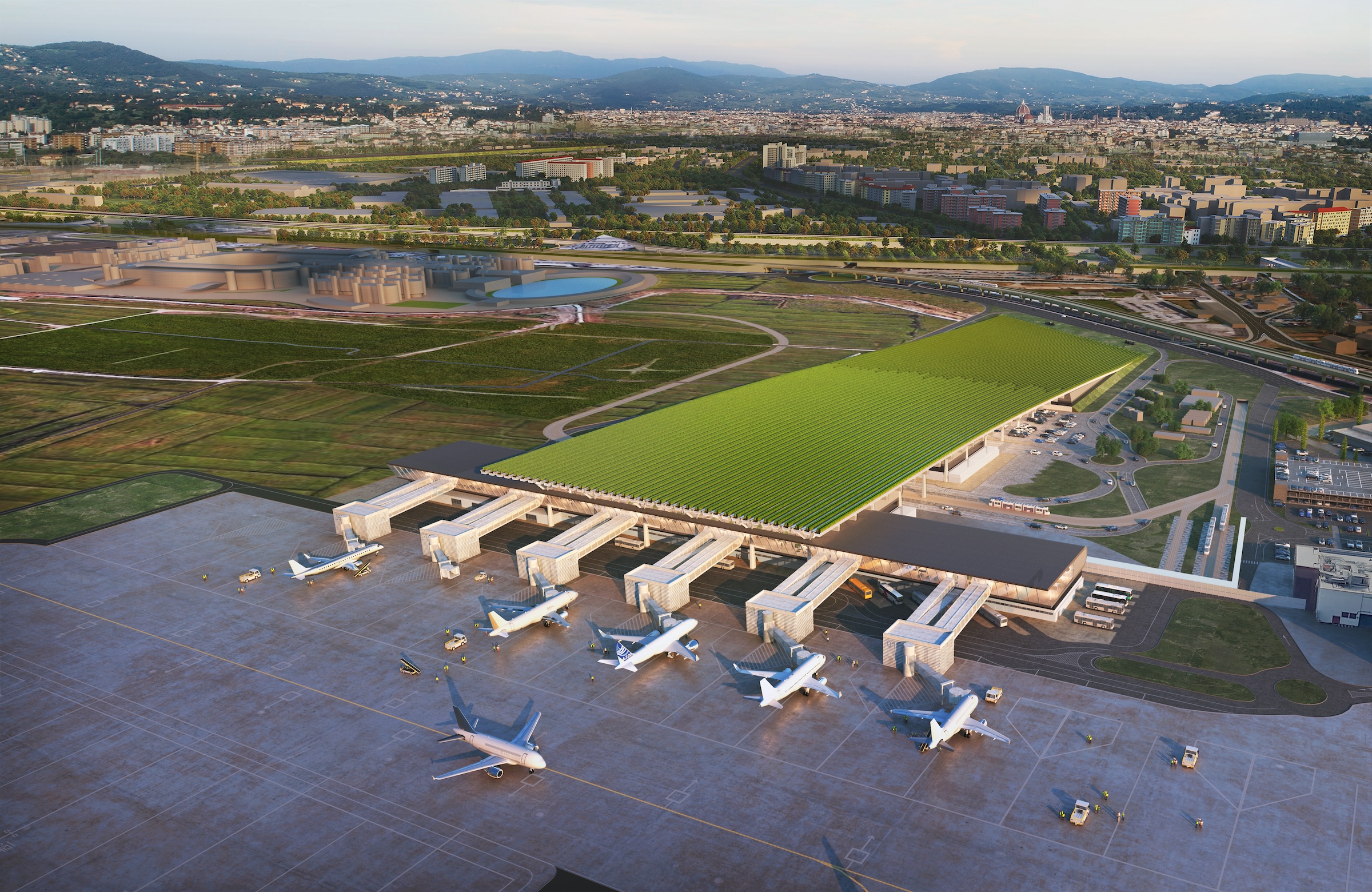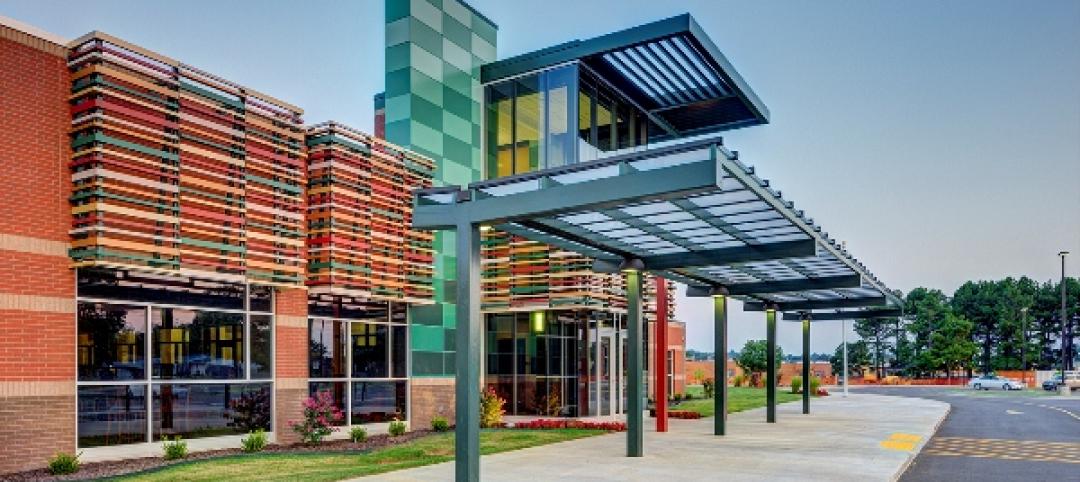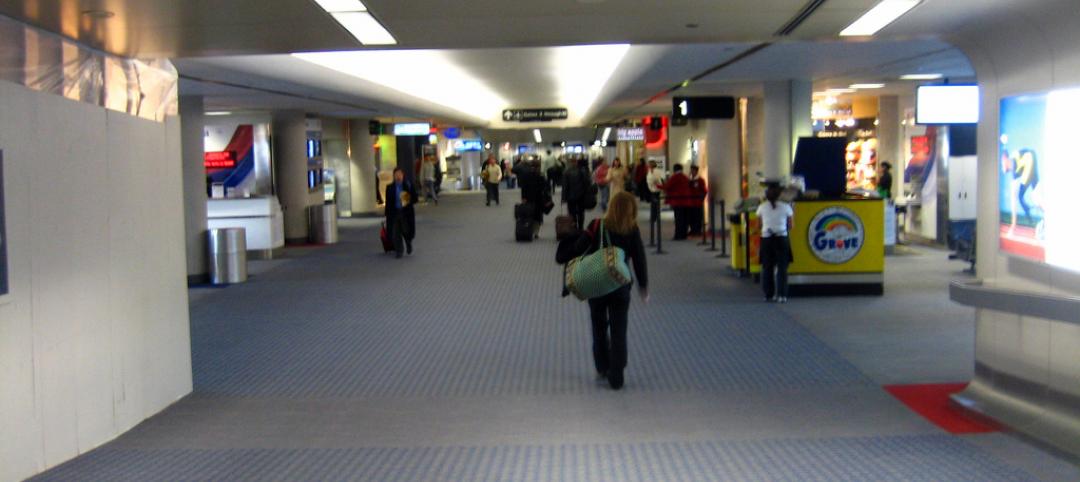At Florence, Italy’s Aeroporto Amerigo Vespucci, the new international airport terminal will feature a fully operating vineyard on the facility’s rooftop. Designed by Rafael Viñoly Architects, the terminal is expected to see over 5.9 million passengers annually. Renderings for the project have recently been released.
The 538,195-sf terminal project will involve both lengthening the existing runway and reorienting it 90 degrees away from the nearby hills, which have limited the operations of many modern planes.
The airport design aims to create a sense of place and improve the passenger experience. In the skylit terminal, arrivals and departures will face each other across a large, central public space, the Piazza. This organization will help streamline circulation into and out of the terminal.
In addition, the terminal will provide access to mass transit, parking, and retail, which will serve both travelers and the local community. The terminal will be connected to the city and the wider region by multimodal transport options, including a new light rail system.
A distinctive feature of the project is a 19-acre vineyard rising above the terminal. This will include 38 active vineyard rows on the building’s sloping roof—contributing to LEED Platinum sustainability rating and representing Italy’s winemaking tradition. A leading winegrower from the region will cultivate the vineyards, and the wine will be crafted and aged in special cellars located beneath the terminal’s roof.
The airport terminal will be completed in two phases: Phase one is expected to be finished in 2026, phase two in 2035.
On the Building Team:
Owner: Toscana Aeroporti SpA
Design architect and architect of record: Rafael Viñoly Architects
MEP engineer: Tekne SpA
Structural engineer: Eckersley O’Callaghan (EOC)
General contractor: Toscana Aeroporti Construction (TAC)






Related Stories
| Dec 8, 2014
Moshe Safdie wants to reinvent airports with Jewel Changi Airport addition
A new addition to Singapore's Changi Airport, designed by Moshe Safdie, will feature a waterfall and extensive indoor gardens.
| Nov 19, 2014
The evolution of airport design and construction [infographic]
Safety, consumer demand, and the new economics of flight are three of the major factors shaping how airlines and airport officials are approaching the need for upgrades and renovations, writes Skanska USA's MacAdam Glinn.
| Nov 18, 2014
Grimshaw releases newest designs for world’s largest airport
The airport is expected to serve 90 million passengers a year on the opening of the first phase, and more than 150 million annually after project completion in 2018.
| Nov 14, 2014
JetBlue opens Gensler-designed International Concourse at JFK
The 175,000-sf extension includes the conversion of three existing gates to international swing gates, and the addition of three new international swing gates.
Sponsored | | Nov 12, 2014
Eye-popping façade highlights renovation, addition at Chaffin Junior High School
The new distinctive main entrance accentuates the public face of the school with an aluminum tube “baguette” system.
| Oct 26, 2014
New York initiates design competition for upgrading LaGuardia, Kennedy airports
New York Gov. Andrew Cuomo said that the state would open design competitions to fix and upgrade New York City’s aging airports. But financing construction is still unsettled.
| Oct 16, 2014
Perkins+Will white paper examines alternatives to flame retardant building materials
The white paper includes a list of 193 flame retardants, including 29 discovered in building and household products, 50 found in the indoor environment, and 33 in human blood, milk, and tissues.
| Oct 12, 2014
AIA 2030 commitment: Five years on, are we any closer to net-zero?
This year marks the fifth anniversary of the American Institute of Architects’ effort to have architecture firms voluntarily pledge net-zero energy design for all their buildings by 2030.
| Sep 24, 2014
Architecture billings see continued strength, led by institutional sector
On the heels of recording its strongest pace of growth since 2007, there continues to be an increasing level of demand for design services signaled in the latest Architecture Billings Index.
| Sep 22, 2014
4 keys to effective post-occupancy evaluations
Perkins+Will's Janice Barnes covers the four steps that designers should take to create POEs that provide design direction and measure design effectiveness.
















